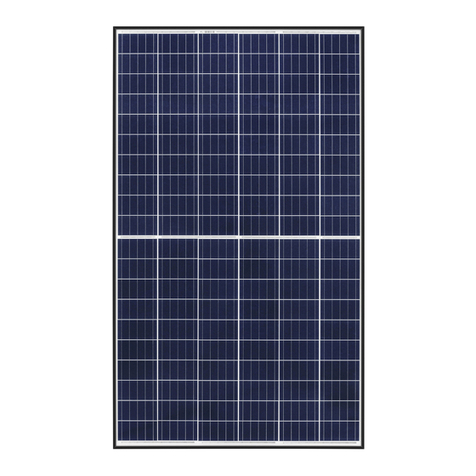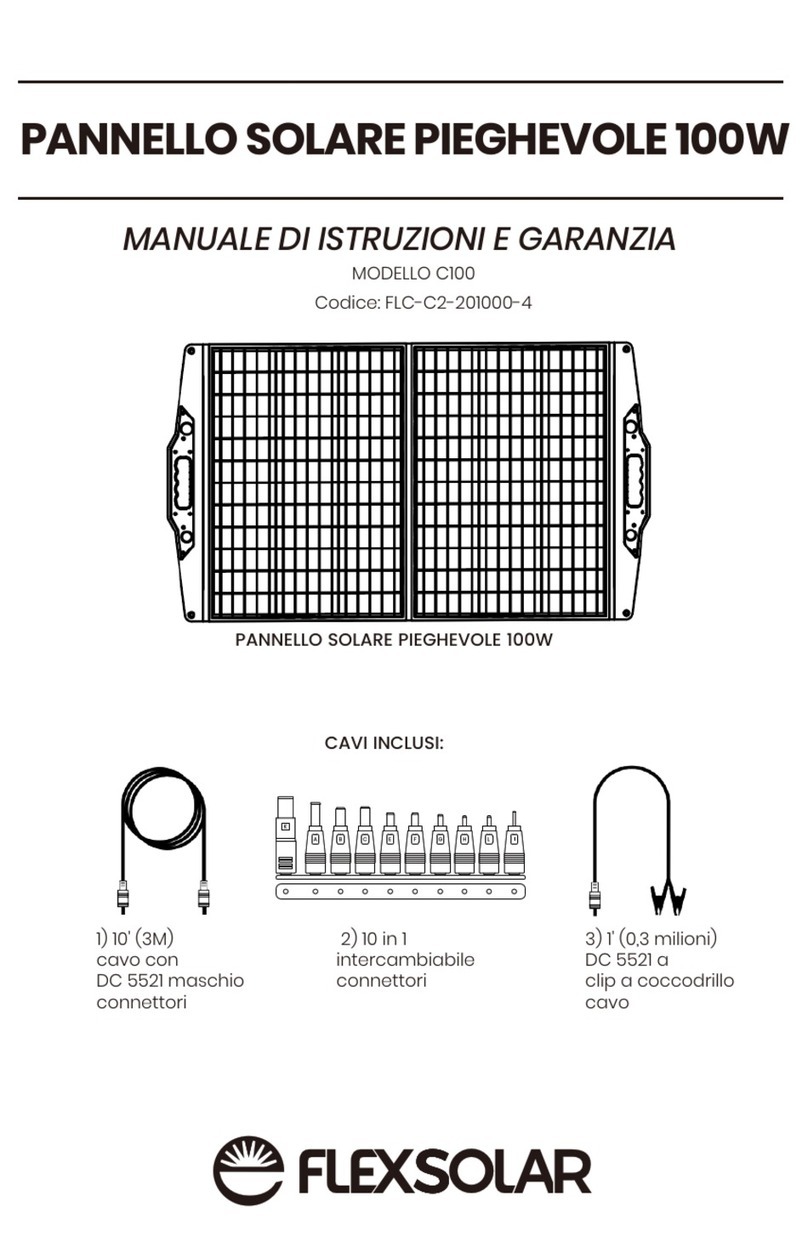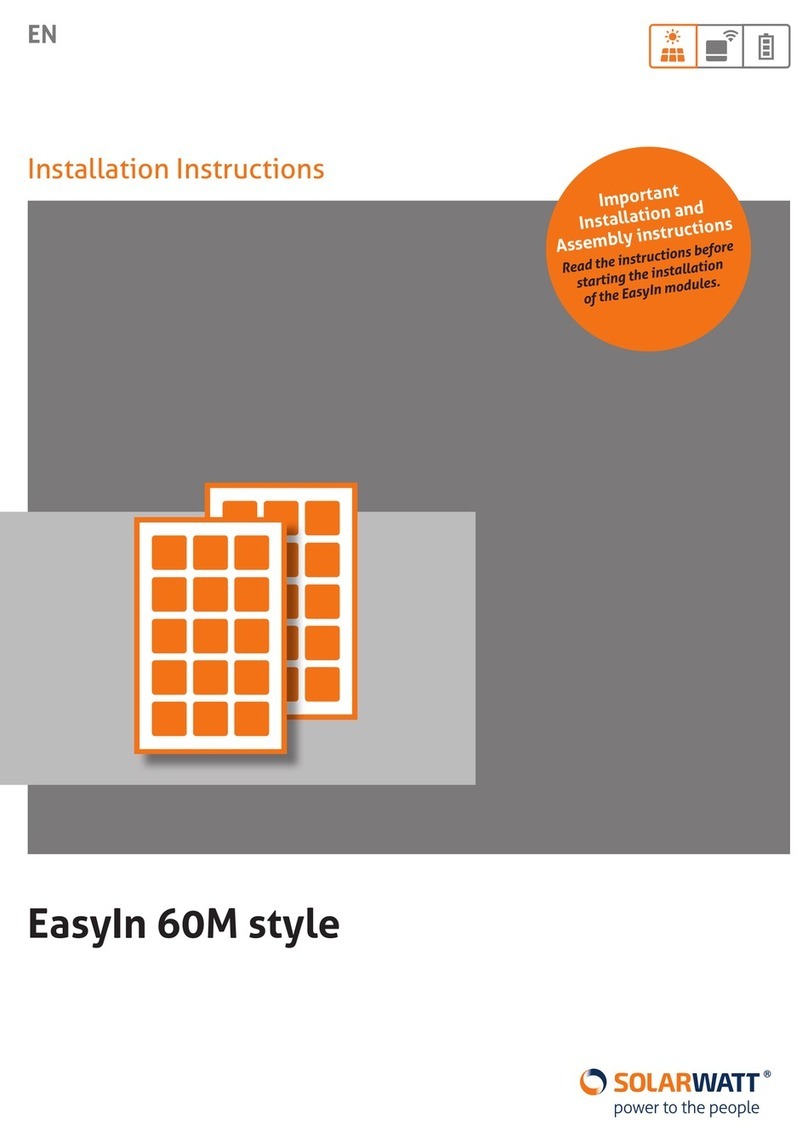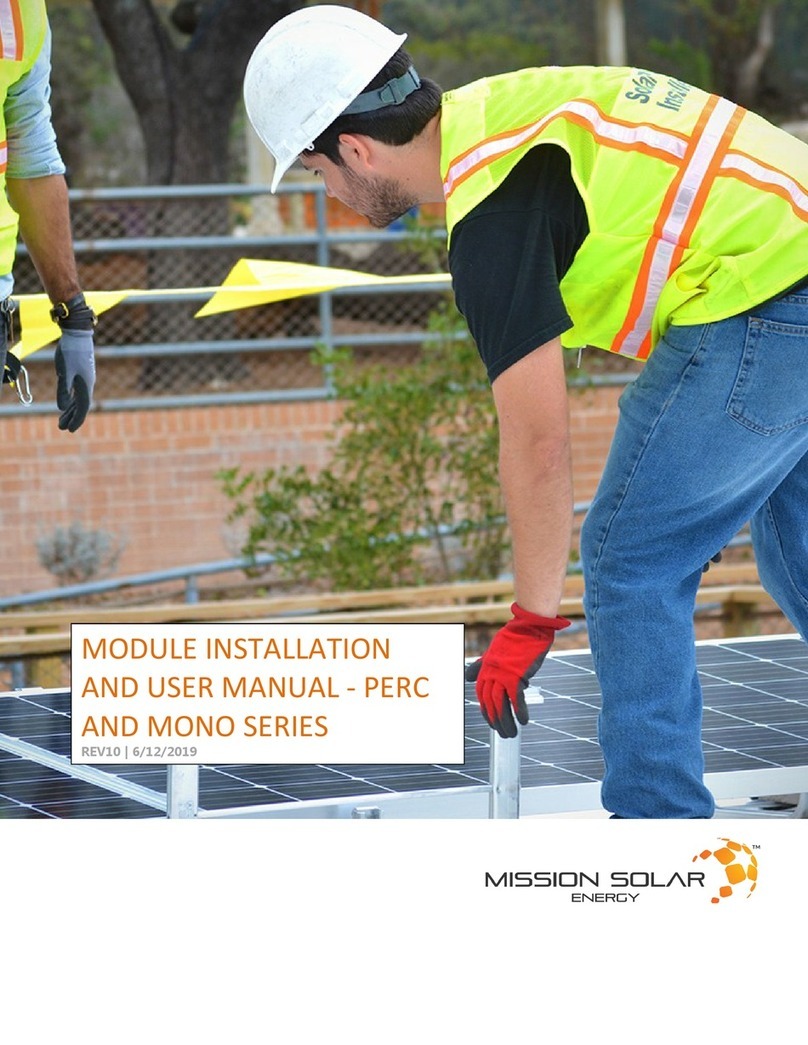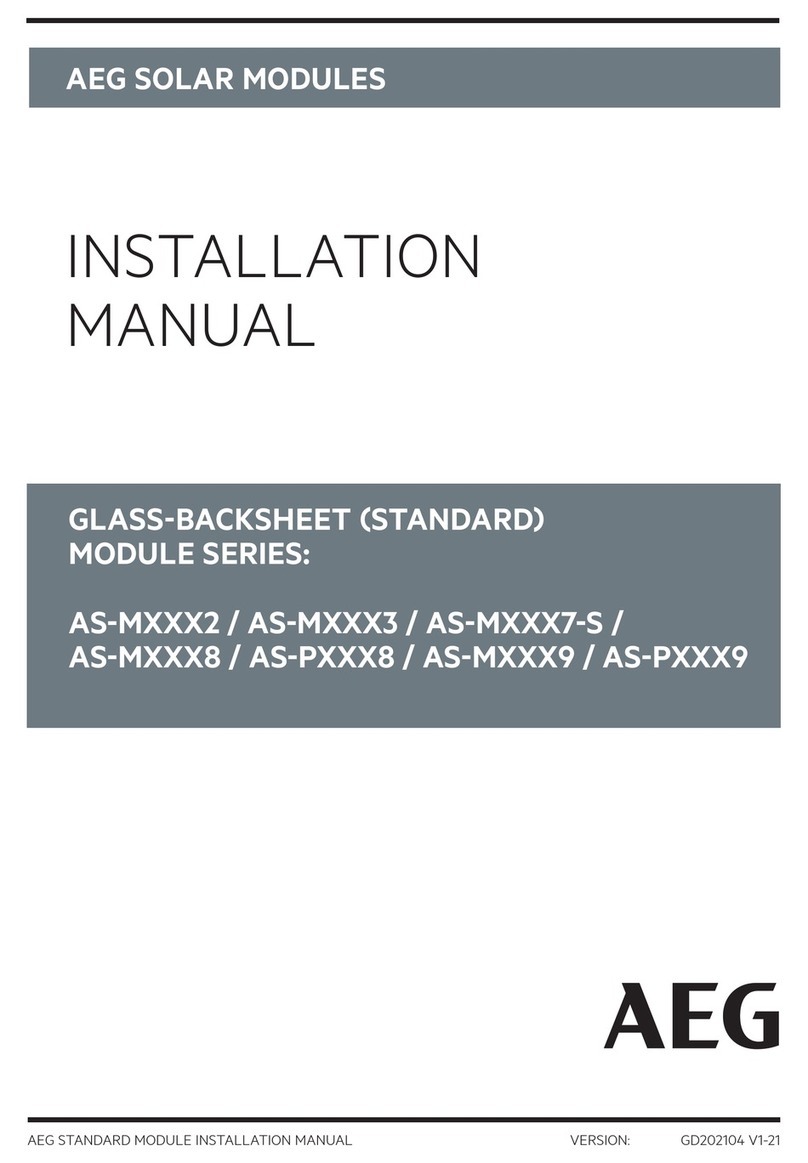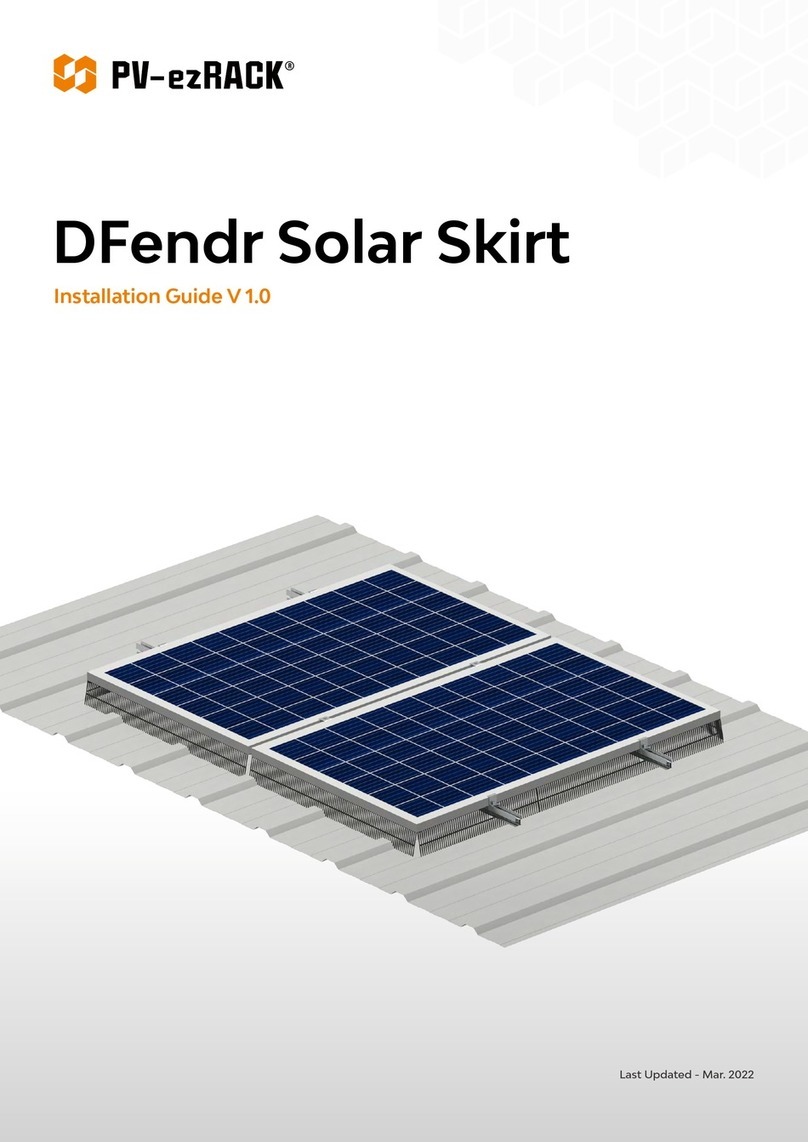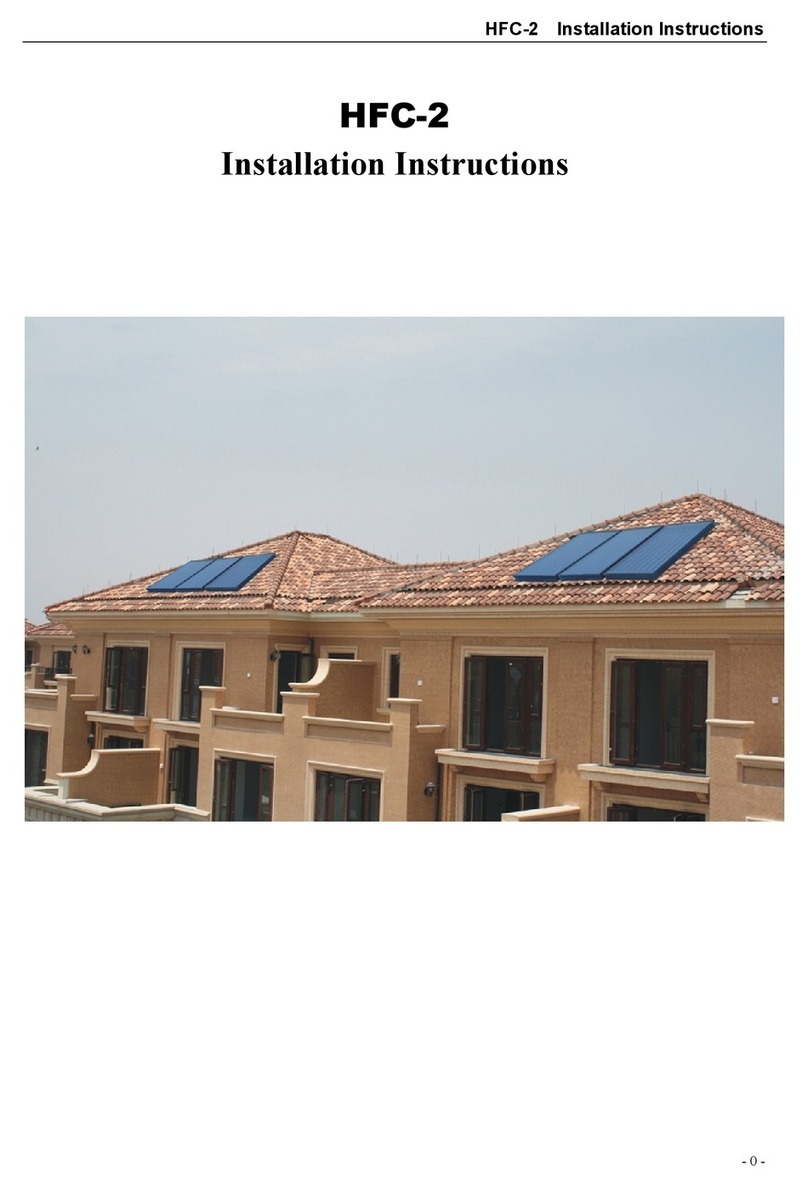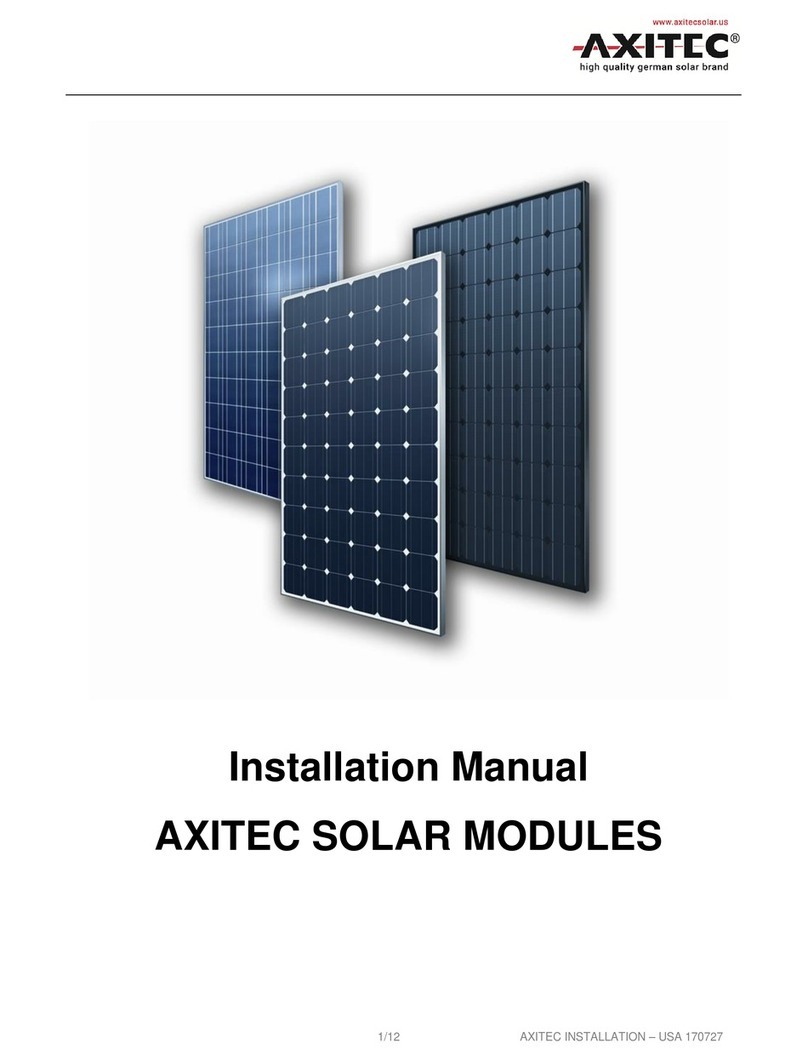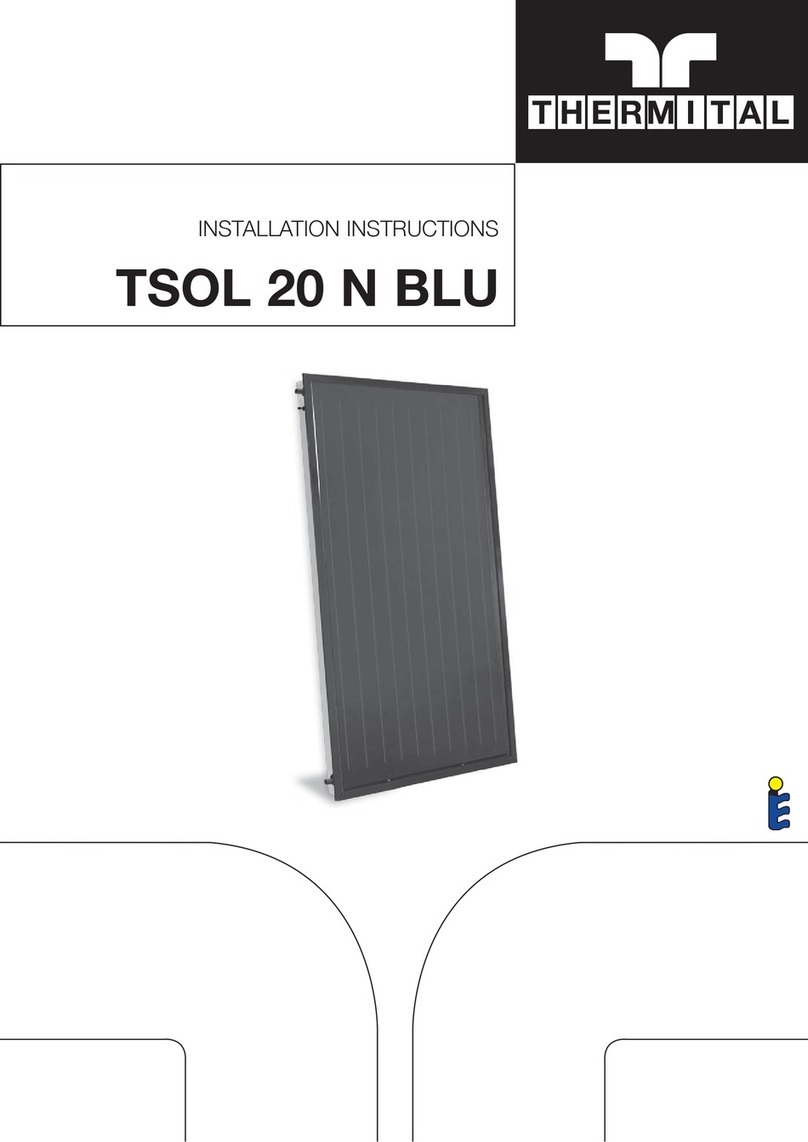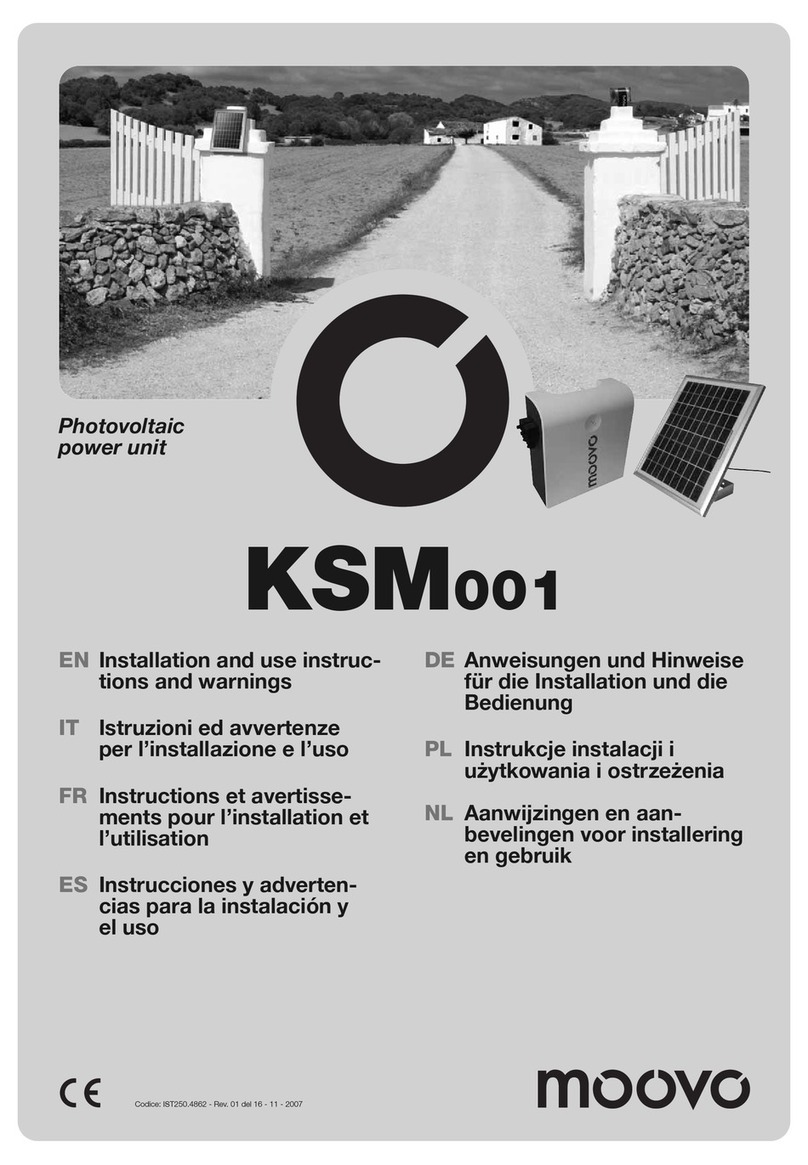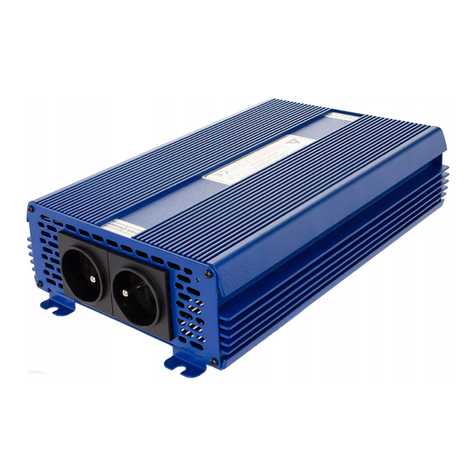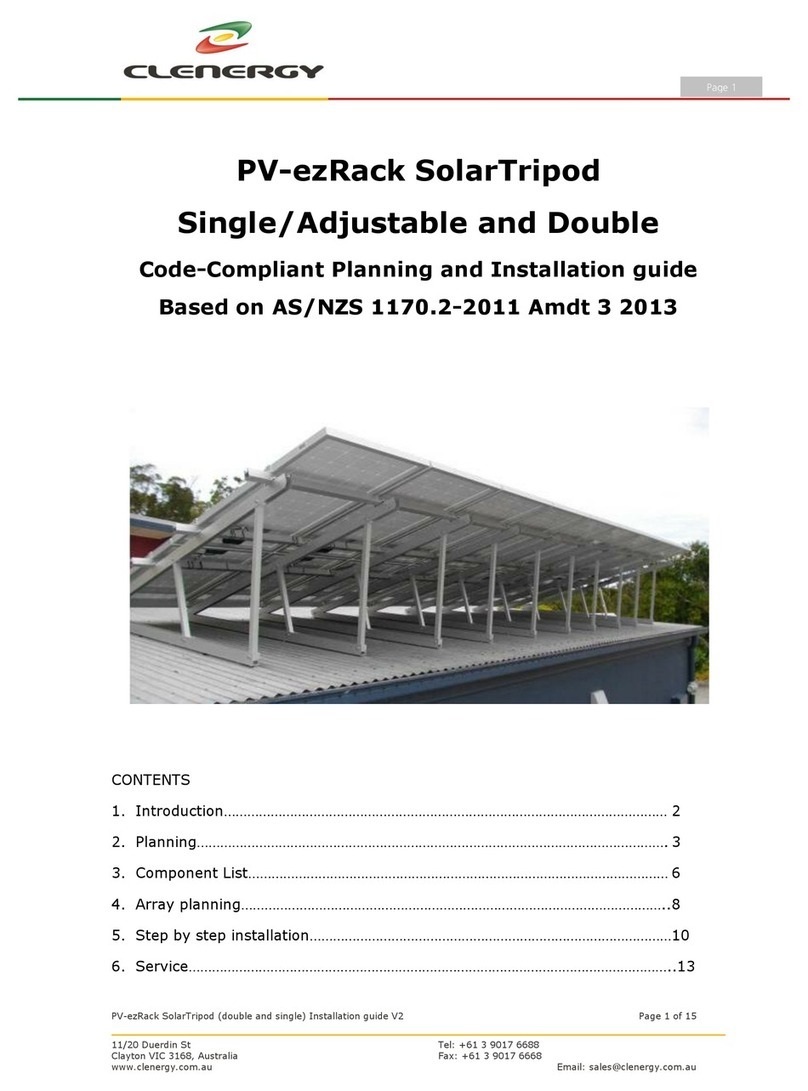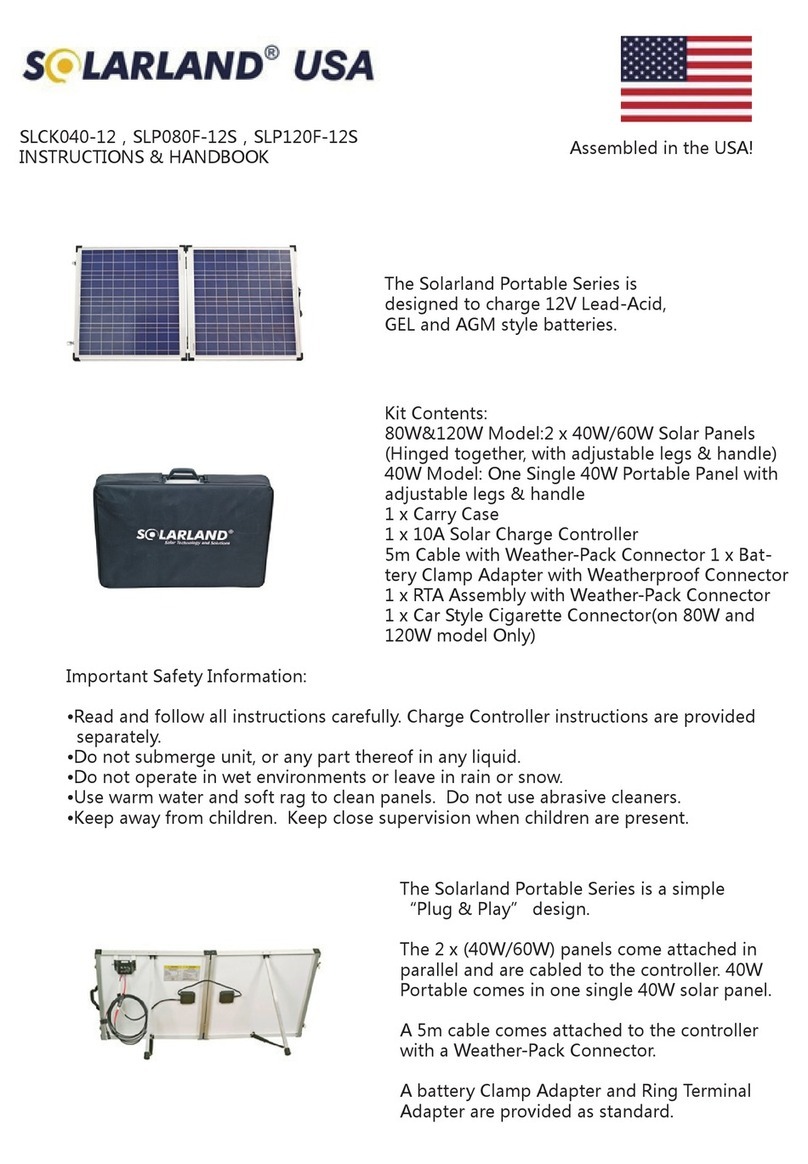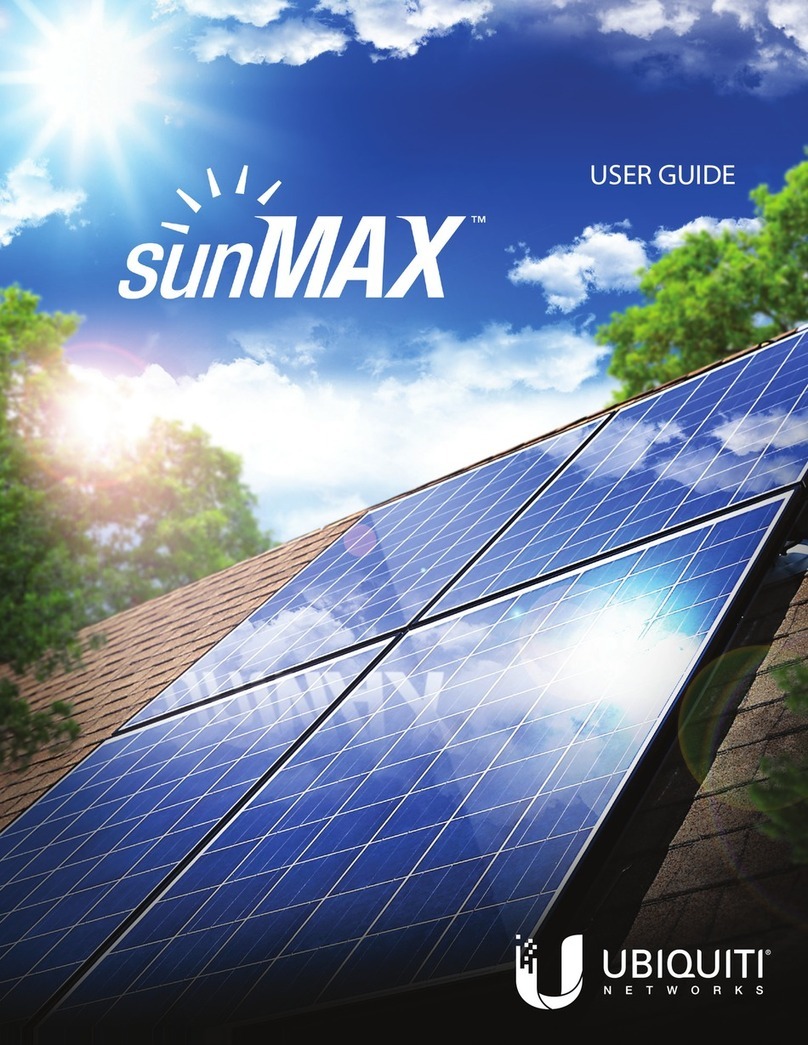
4
AEG STANDARD MODULE INSTALLATION MANUAL GD202008 V1-20EN
Do not exceed the maximum stapling limitation of 2
pallets (standard packaging for shipment).
After unpacking, the modules should be laid
horizontally. Do not incline or stack the modules.
Do not pile up modules without protections to prevent
scratches to the glass and frame. Should the modules
need to be piled, they need to be separated by special
paper or plastic angles.
Do not scratch or damage the module surface.
Do not drill holes in the frame as it may compromise its
strength, cause corrosion and void the warranty.
Do not use the junction box and cables as a grip.
Do not drop the module or allow objects to fall on the
module.
Do not place any heavy objects on the module to avoid
glass breakage.
Do not stand or step on the module.
Do not set the module down hard on a surface.
Do not attempt to repair a module with broken
glass or torn backsheet and do not use it as
contact with any module surface or the frame
could cause an electric shock.
2.3 Installation safety
Installing solar photovoltaic systems requires
specialized skills and knowledge. Photovoltaic solar
modules are designed for outdoor use, and may be
ground mounted as well as mounted on rooftops,
vehicles or boats. The proper design of support
structures is a responsibility of the system designer
and installer. When installing the system, abide with
all local, regional and national statutory regulations.
Keep children away from the installation site and
during transportation and installation of the electrical
equipment.
Cover the module completely with a dark opaque
material during installation to prevent electricity
generation.
When working with modules without any cover, the
safety regulations for live electrical equipment need to
be followed. Use only equipment, connectors, wiring
and support frames suitable for use in a solar electric
installation.
Do not wear metallic rings, watchbands, ear,
nose or lip rings or other metallic devices while
installing or troubleshooting photovoltaic
systems in order to avoid electric shock.
Do not disconnect modules under load to avoid
electrical arcs.
Contact with electrically active parts of the modules,
such as terminals, can result in burns, sparks and
lethal shock whether or not the module is connected.
Do not insert electrically conductive parts into the
plugs and sockets.
Do not install solar modules and wiring with wet plugs
and sockets.
Exert extreme caution when carrying out any work on
the wiring. High contact voltages can generate in the
inverter when it is isolated.
Abide with the safety regulations for all the other
components used in the PV system, including wiring
and cables, connectors, charging regulators, inverters,
storage batteries and rechargeable batteries, etc
One individual module may generate DC
voltages greater than 30 V when exposed to
light of any intensity. Contact with a DC voltage
of 30 V or more is potentially hazardous. The series or
parallel connection of the modules increases the
voltage or electric current respectively. The electrical
characteristics are within the following tolerances of the
indicated values of Isc, Voc and Pmpp under standard
test conditions (irradiance of 1000 W/m², AM 1.5
spectrum, and a cell temperature of 25 °C/77 °F). :
Model Tolerance
AS-Mxxx2 Isc ±4%
Voc ±3%
Pmpp ±3%
AS-Mxxx3 Isc ±5%
Voc ±3%
Pmpp ±3%
AS-Mxxx8 / AS-Pxxx8 Isc ±5%
Voc ±5%
Pmpp ±5%.
AS-Mxxx9 / AS-Pxxx9 Isc ±3%
Voc ±3%
Pmpp ±3%
Under normal conditions, a photovoltaic module is
likely to experience conditions that produce more
current and/or voltage than reported at standard test
conditions. Accordingly, the values of Isc and Voc
marked on the module should be multiplied by a factor
of 1.25 when determining component voltage ratings,
conductor current ratings, minimum factor of fuse sizes,
and size of controls connected to the PV output.
